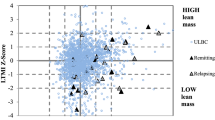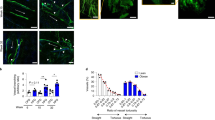Abstract
Adipose tissue has long been regarded as a passive type of connective tissue that stores energy as triglycerides and releases energy as free fatty acids, however, this point of view has now changed. The wide variety of products expressed and secreted by adipose tissue, such as adiponectin, leptin, and resistin, mean that the total adipose tissue mass can be defined as a real endocrine organ. The anatomic, metabolic and biochemical characteristics of visceral adipose tissue make it interesting in the context of intestinal and mesenteric diseases. These characteristics include increased lipolysis, venous drainage via the portal vein and local glucocorticoid excess owing to the specific expression of 11-β-hydroxysteroid-dehydrogenase type 1. In this review, the role of the visceral adipose tissue and its secretory products in intestinal and mesenteric diseases is systematically reviewed, with special focus on 'creeping fat' in Crohn's disease and mesenteric panniculitis.
This is a preview of subscription content, access via your institution
Access options
Subscribe to this journal
Receive 12 print issues and online access
$209.00 per year
only $17.42 per issue
Buy this article
- Purchase on Springer Link
- Instant access to full article PDF
Prices may be subject to local taxes which are calculated during checkout



Similar content being viewed by others
References
Shimomura I et al. (1996) Enhanced expression of PAI-1 in visceral fat: possible contributor to vascular disease in obesity. Nat Med 2: 800–803
Ahima RS and Flier JS (2000) Adipose tissue as an endocrine organ. Trends Endocrinol Metab 11: 327–332
Fain JN et al. (2004) Comparison of the release of adipokines by adipose tissue, adipose tissue matrix, and adipocytes from visceral and subcutaneous abdominal adipose tissues of obese humans. Endocrinology 145: 2273–2282
Wellen KE and Hotamisligil GS (2003) Obesity-induced inflammatory changes in adipose tissue. J Clin Invest 112: 1785–1788
Weisberg SP et al. (2003) Obesity is associated with macrophage accumulation in adipose tissue. J Clin Invest 112: 1796–1808
Grimble RF (2002) Inflammatory status and insulin resistance. Curr Opin Clin Nutr Metab Care 5: 551–559
Lyon CJ et al. (2003) Minireview: adiposity, inflammation, and atherogenesis. Endocrinology 144: 2195–2200
Xu H et al. (2003) Chronic inflammation in fat plays a crucial role in the development of obesity-related insulin resistance. J Clin Invest 112: 1821–1830
Curat CA et al. (2004) From blood monocytes to adipose tissue-resident macrophages: induction of diapedesis by human mature adipocytes. Diabetes 53: 1285–1292
Sartipy P and Loskutoff DJ (2003) Monocyte chemoattractant protein 1 in obesity and insulin resistance. Proc Natl Acad Sci USA 100: 7265–7270
Levine JA et al. (1998) Adipocyte macrophage colony-stimulating factor is a mediator of adipose tissue growth. J Clin Invest 101: 1557–1564
Charriere G et al. (2003) Preadipocyte conversion to macrophage. Evidence of plasticity. J Biol Chem 278: 9850–9855
Lehrke M and Lazar MA (2004) Inflamed about obesity. Nat Med 10: 126–127
Fried SK et al. (1998) Omental and subcutaneous adipose tissues of obese subjects release interleukin-6: depot difference and regulation by glucocorticoid. J Clin Endocrinol Metab 83: 847–850
Torti FM et al. (1989) Modulation of adipocyte differentiation by tumor necrosis factor and transforming growth factor beta. J Cell Biol 108: 1105–1113
Zhang HH et al. (2002) Tumor necrosis factor-alpha stimulates lipolysis in differentiated human adipocytes through activation of extracellular signal-related kinase and elevation of intracellular cAMP. Diabetes 51: 2929–2935
Sorisky A et al. (2000) Adipose cell apoptosis: death in the energy depot. Int J Obes Relat Metab Disord 4 (Suppl): S3–S7
Klein S (2004) The case of visceral fat: argument for the defense. J Clin Invest 113: 1530–1532
Arner P (2001) Regional differences in protein production by human adipose tissue. Biochem Soc Trans 29 (Part 2): 72–75
Nielsen S et al. (2004) Splanchnic lipolysis in human obesity. J Clin Invest 113: 1582–1588
Cianflone K et al. (2003) Critical review of acylation-stimulating protein physiology in humans and rodents. Biochim Biophys Acta 1609: 127–143
Rebuffe-Scrive M et al. (1990) Steroid hormone receptors in human adipose tissues. J Clin Endocrinol Metab 71: 1215–1219
Stulnig TM and Waldhäusl W (2004) 11β-hydroxysteroid dehydrogenase type 1 in obesity and type 2 diabetes. Diabetologia 47: 1–11
Bujalska IJ et al. (1997) Does central obesity reflect “Cushing's disease of the omentum”? Lancet 349: 1210–1213
Hanson RW and Reshef L (1997) Regulation of phosphoenolpyrovate carboxykinase (GTP) gene expression. Annu Rev Biochem 66: 581–611
Gabriely I et al. (2002) Removal of visceral fat prevents insulin resistance and glucose intolerance of aging: an adipokine-mediated process? Diabetes 51: 2951–2958
Herlinger H et al. (1998) Fibrofatty proliferation of the mesentery in Crohn disease. Abdom Imaging 23: 446–448
Desreumaux P et al. (1999) Inflammatory alterations in mesenteric adipose tissue in Crohn's disease. Gastroenterology 117: 73–81
Carey DG (1998) Abdominal obesity. Curr Opin Lipidol 9: 35–40
Sheehan AL et al. (1992) Fat-wrapping in Crohn's disease: pathological basis and relevance to surgical practice. Br J Surg 79: 955–958
Smedh K et al. (1993) Intraoperative enteroscopy in Crohn's disease. Br J Surg 80: 897–900
Borley NR et al. (2000) The relationship between inflammatory and serosal connective tissue changes in ileal Crohn's disease: evidence for a possible causative link. J Pathol 190: 196–202
Van Deventer SJ (1997) Tumor necrosis factor and Crohn's disease. Gut 40: 443–448
Graham MF et al. (1990) Transforming growth factor beta 1 selectively augments collagen synthesis by human intestinal smooth muscle cells. Gastroenterology 99: 447–453
Chinetti G et al. (2000) Peroxisome proliferator-activated receptors (PPARs): nuclear receptors at the crossroads between lipid metabolism and inflammation. Inflamm Res 49: 497–505
Dubuquoy L et al. (2002) Role of peroxisome proliferator-activated receptor γ and retinoid X receptor heterodimer in hepatogastroenterological diseases. Lancet 360: 1410–1418
Brun RP et al. (1997) Peroxisome proliferator-activated receptor gamma and the control of adipogenesis. Curr Opin Lipidol 8: 212–218
Barbier M et al. (2003) Overexpression of leptin mRNA in mesenteric adipose tissue in IBD. Gastroenterol Clin Biol 27: 987–991
Sitaraman S et al. (2004) Colonic leptin: source of a novel proinflammatory cytokine involved in inflammatory bowel disease. FASEB J 18: 696–708
Breese EJ et al. (1994) Tumor necrosis factor α-producing cells in the intestinal mucosa of children with inflammatory bowel disease. Gastroenterology 106: 1455–1466
Rosenbaum S and Greenberg A (1998) The short- and long-term effects of tumor necrosis factor-alpha and BRL49653 on peroxisome proliferator-activated receptor (PPAR)gamma2 gene expression and other adipocyte genes. Mol Endocrinol 12: 1150–1160
Okuno A et al. (1998) Troglitazone increases the number of small adipocytes without the change of white adipose tissue mass in obese Zucker rats. J Clin Invest 101: 1354–1361
Ouchi N et al. (2003) Obesity, adiponectin and vascular inflammatory disease. Curr Opin Lipidol 14: 561–566
Maeda N et al. (2002) Diet-induced insulin resistance in mice lacking adiponectin/ACRP30. Nat Med 8: 731–737
Ouchi N et al. (2000) Adiponectin, an adipocyte-derived plasma protein, inhibits endothelial NF-κB signaling through a cAMP-dependent pathway. Circulation 102: 1296–1301
Blain A et al. (2002) Crohn's disease clinical course and severity in obese patients. Clin Nutr 21: 51–57
Colombel JF et al. (2002) The adipose tissue as a source of proinflammatory signals in Crohn's disease? In Targets of treatment in chronic inflammatory bowel diseases: Proceedings of Falk Symposium 131: 2002 October 6–8; Freiburg, 99–104 (Ed Herfarth H et al.) Dordrecht; Boston: Kluwer Academic Publishers
Pond CM (2001) Long-term changes in adipose tissue in human disease. Proc Nutr Soc 60: 365–374
Wada K et al. (2001) PPARγ and inflammatory bowel disease: a new therapeutic target for ulcerative colitis and Crohn's disease. Trends Mol Med 7: 329–331
Parra-Davila E et al. (1998) Mesenteric panniculitis: case report and literature review. Am Surg 64: 768–771
Emory TS et al. (1997) Sclerosing mesenteritis, mesenteric panniculitis and mesenteric lipodystrophy: a single entity? Am J Surg Pathol 21: 392–398
Kakitsubata Y et al. (1993) CT and MRI manifestations of intraabdominal panniculitus. Clin Imaging 17: 186–188
Katsanos KH et al. (2004) A fatal case of sclerosing mesenteritis. Dig Liver Dis 36: 153–156
Kipfer RE et al. (1974) Mesenteric lipodystrophy. Ann Intern Med 80: 582–588
Nicholson AC (2004) Expression of CD36 in macrophages and atherosclerosis: the role of lipid regulation of PPARgamma signaling. Trends Cardiovasc Med 14: 8–12
Bala A et al. (2001) Treatment of sclerosing mesenteritis with corticosteroids and azathioprine. Can J Gastroenterol 15: 533–535
Acknowledgements
The photographs in Figure 2 were a gift from A Fürst of the Department of Surgery, University of Regensburg, Germany, whose generosity is much appreciated.
Author information
Authors and Affiliations
Corresponding author
Ethics declarations
Competing interests
The authors declare no competing financial interests.
Rights and permissions
About this article
Cite this article
Schäffler, A., Schölmerich, J. & Büchler, C. Mechanisms of Disease: adipocytokines and visceral adipose tissue—emerging role in intestinal and mesenteric diseases. Nat Rev Gastroenterol Hepatol 2, 103–111 (2005). https://doi.org/10.1038/ncpgasthep0090
Received:
Accepted:
Issue Date:
DOI: https://doi.org/10.1038/ncpgasthep0090
This article is cited by
-
Impact of oral lipid and glucose tolerance tests on the postprandial concentrations of angiopoietin-like proteins (Angptl) 3 and 4
European Journal of Nutrition (2022)
-
Whole transcriptional analysis identifies markers of B, T and plasma cell signaling pathways in the mesenteric adipose tissue associated with Crohn’s disease
Journal of Translational Medicine (2020)
-
Immunopathogenesis of IBD: current state of the art
Nature Reviews Gastroenterology & Hepatology (2016)
-
Pannikulitis des Oberschenkels und Lungenemphysem bei einem 54-jährigen Patienten
Der Internist (2015)
-
55-jähriger Patient mit abdominellen Schmerzen und Fieber
Der Internist (2013)



